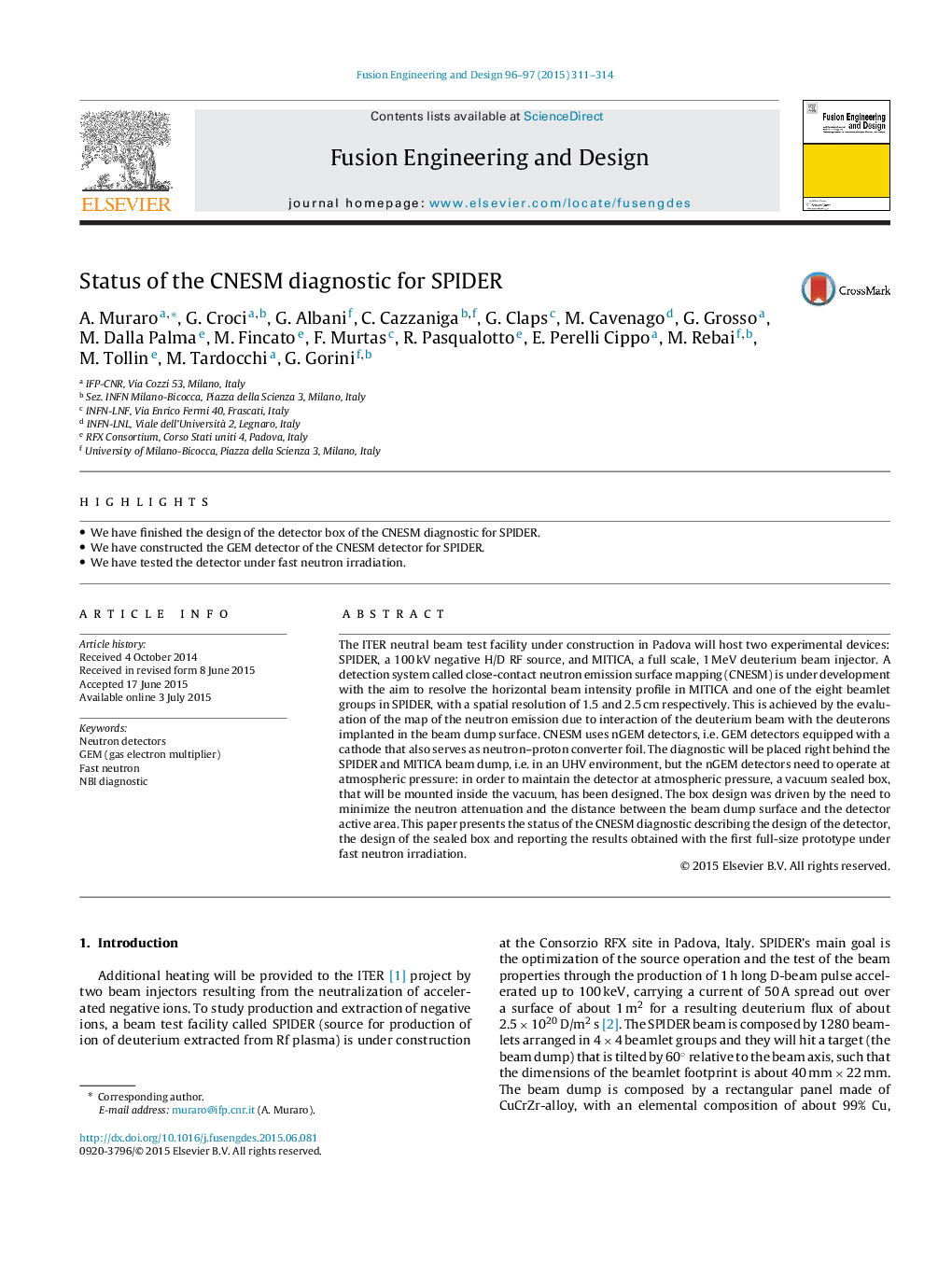| Article ID | Journal | Published Year | Pages | File Type |
|---|---|---|---|---|
| 6746197 | Fusion Engineering and Design | 2015 | 4 Pages |
Abstract
The ITER neutral beam test facility under construction in Padova will host two experimental devices: SPIDER, a 100Â kV negative H/D RF source, and MITICA, a full scale, 1Â MeV deuterium beam injector. A detection system called close-contact neutron emission surface mapping (CNESM) is under development with the aim to resolve the horizontal beam intensity profile in MITICA and one of the eight beamlet groups in SPIDER, with a spatial resolution of 1.5 and 2.5Â cm respectively. This is achieved by the evaluation of the map of the neutron emission due to interaction of the deuterium beam with the deuterons implanted in the beam dump surface. CNESM uses nGEM detectors, i.e. GEM detectors equipped with a cathode that also serves as neutron-proton converter foil. The diagnostic will be placed right behind the SPIDER and MITICA beam dump, i.e. in an UHV environment, but the nGEM detectors need to operate at atmospheric pressure: in order to maintain the detector at atmospheric pressure, a vacuum sealed box, that will be mounted inside the vacuum, has been designed. The box design was driven by the need to minimize the neutron attenuation and the distance between the beam dump surface and the detector active area. This paper presents the status of the CNESM diagnostic describing the design of the detector, the design of the sealed box and reporting the results obtained with the first full-size prototype under fast neutron irradiation.
Related Topics
Physical Sciences and Engineering
Energy
Energy Engineering and Power Technology
Authors
A. Muraro, G. Croci, G. Albani, C. Cazzaniga, G. Claps, M. Cavenago, G. Grosso, M. Dalla Palma, M. Fincato, F. Murtas, R. Pasqualotto, E. Perelli Cippo, M. Rebai, M. Tollin, M. Tardocchi, G. Gorini,
